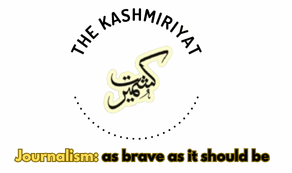
A video of a woman committing suicide by jumping into the Jhelum River has gone viral on social media. This disturbing trend follows a series of similar incidents, where individuals have ended their lives by plunging into water bodies, as seen across various social media platforms.
According to an official from the State Disaster Response Force, Kashmir recorded 43 drowning cases last month, with over a dozen being suicides. “This year has seen a worrying number of drowning incidents. Last month alone, 40 such cases were reported, including more than a dozen suicides,” the official said.
The National Crime Record Bureau (NCRB) report underscores a significant rise in suicides in Jammu and Kashmir, which accounted for about 30 percent of all suicides in India in 2022.
Dr. Yasir Ahmad Rather, a Psychiatry professor at IMHANS, GMC Srinagar, highlighted that 90 percent of suicide cases are linked to underlying mental health issues. “Many individuals considering suicide suffer from severe depression caused by factors such as financial problems, domestic violence, relationship failures, or academic stress. These mental health struggles often prevent them from managing stress effectively,” Dr. Yasir explained.
He noted that the increase in suicides reflects deep-seated mental health challenges within society. “Those at risk often display warning signs, such as isolation and changes in their social media activity, before taking drastic actions,” he added.
Dr. Yasir also pointed to the copycat phenomenon as a factor in the rising suicide rates. “When suicide cases receive extensive media coverage, it can trigger imitative behavior in individuals with similar circumstances, exacerbating suicidal thoughts,” he said.
To address this crisis, Dr. Yasir emphasized the role of society, particularly parents and religious leaders. “Religious scholars and leaders can raise awareness and discuss these issues from a religious perspective. Additionally, parents and teachers can provide essential support and counseling to children,” he concluded. KNO




